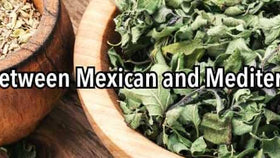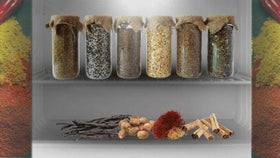Can I Use Chili Powder Instead Of Ground Red Pepper?
Every chef, home cook, and culinary enthusiast has found themselves in an ingredient predicament at least a handful of times, making their way through the steps in a recipe when they realize they don’t have a key ingredient.
Rather than giving up altogether, most of us will question what can be used instead. Making substitutions can often lead to delightful surprises, but there are other times when replacing a single ingredient can transform the recipe into something unrecognizable.
When it comes to the use of ground red pepper and chili powder, it can really go either way. Let’s take a look at the differences between these two ingredients, as well as applications when substituting one for the other isn’t a bad idea and other times when it might be better to use something else or omit altogether.
What Are The Differences Between Ground Red Pepper and Chili Powder
The main difference between ground red pepper and chili powder comes down to their composition, with both containing dried, ground chile peppers, but one containing an assortment of other spices.
What is ground red pepper?
Ground red pepper is purely made of dried chiles that have been ground into a fine powder. Most often, Cayenne chile peppers are utilized, but other high-heat red peppers may also be blended in. It is most often used to impart a fiery spiciness to dishes, rather than significantly altering the flavor.
What is ground chili powder?
Chile powder does include ground chiles but not in isolation. This spice blend varies by recipe, often including ingredients such as cumin, salt, Mexican oregano, onion, garlic, cinnamon, and more. While it does impart a bit of heat, it is more so recognized for adding complexity and depth to dishes.
You’ll love this easy DIY chili powder recipe.
When shouldn’t you use chili powder in place of ground red pepper?
As mentioned earlier, chili powder is a blend of various spices and as is the case with all spices, they have their own flavor profiles that will alter the taste of your dish. The spices used to make chili powder were paired together initially as a seasoning for chili con carne. While it is now seen as more of a multipurpose seasoning, it does contribute a distinctive flavor and there are definitely instances when substituting chili powder for red pepper might not be ideal.
This is especially true for recipes where the distinct flavors of individual ingredients are paramount, such as a simple tomato sauce or delicate soup. The use of chili powder could overshadow the subtleties of other ingredients. Another instance when we would not advise the substitution is when intensity of heat is the goal of the red pepper. Because chili powder contains other ingredients, it will take far more to reach the same level of spiciness and the other ingredients will throw the flavor off before reaching the desired level. Other, more minimalistic dishes and sauces will also be in jeopardy of destruction with a multi-spice blend. A few examples are: seafood in a lemon butter sauce, blanched asparagus with hollandaise, or a simple vinaigrette.
When is it ok to use chili powder in place of ground red pepper?
There are many instances when the it’s certainly not a bad idea to substitute chili pepper for red pepper in a pinch. You just have to understand that it will alter the flavor. Many rubs often have ingredients like cumin in them already because it adds a warm flavor that enhances grilled and roasted meats, seafoods, vegetables, and even fruits like peaches and apples. Sure, it won’t be quite as spicy, but some folks might prefer that.
Grilled foods aren’t the only dishes that can tolerate the substitution. With braises, heavy sauces, and hearty stews, complexity and depth of flavor are often the end-goal, not necessarily fiery spiciness. With that in mind, incorporating chili powder into the mix will still likely produce a delicious result.
What else can be substituted for ground red pepper?
Let’s say you don’t particularly enjoy the high heat or flavor in cayenne pepper or the extra ingredients in chili powder. There are other ways of incorporating that chile flavor into your dishes without using either ingredient. For a low-heat chile powder (which is pure ground chiles, not to be confused with chili powder), we really enjoy pasilla powder and there are plenty of other varieties of ground chiles to choose from. You can see our selection here.
Is it a good idea to swap ground red pepper or other ground chiles for chili powder?
This swap can offer a unique twist to dishes and introduce complex flavor profile that can elevate your culinary creations, but as mentioned in this article, it is not always in the dish’s best interest. There are instances where it's best to stick with the original ingredient or substitute with a similar ingredient, like another single-ingredient ground chile powder. When making your decision, consider the intended level of heat, flavor profile, and authenticity of the dish. Ultimately, the choice between using chili powder or ground red pepper should align with your culinary goals and the specific requirements of the recipe at hand.










Slofoodgroup
Author